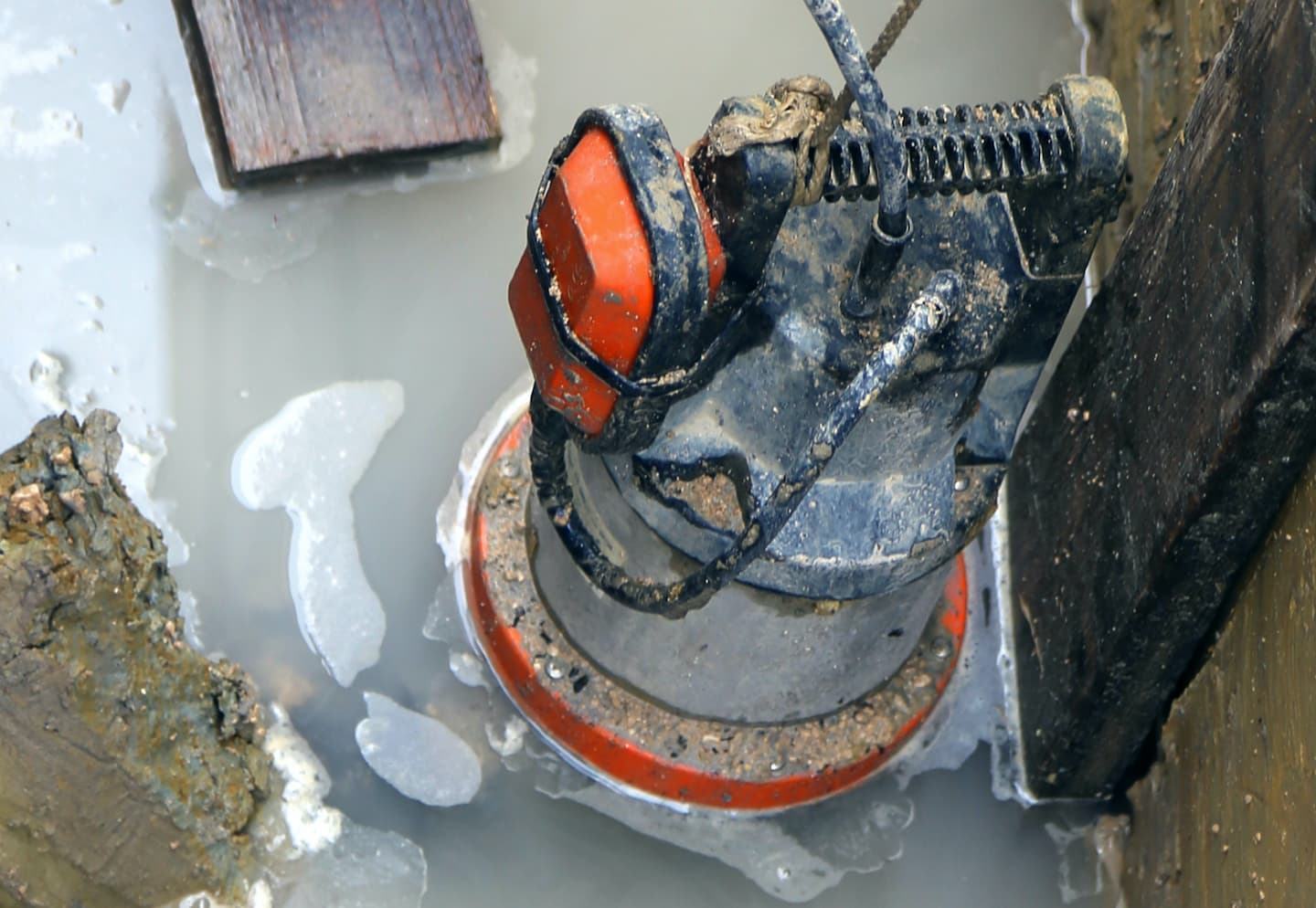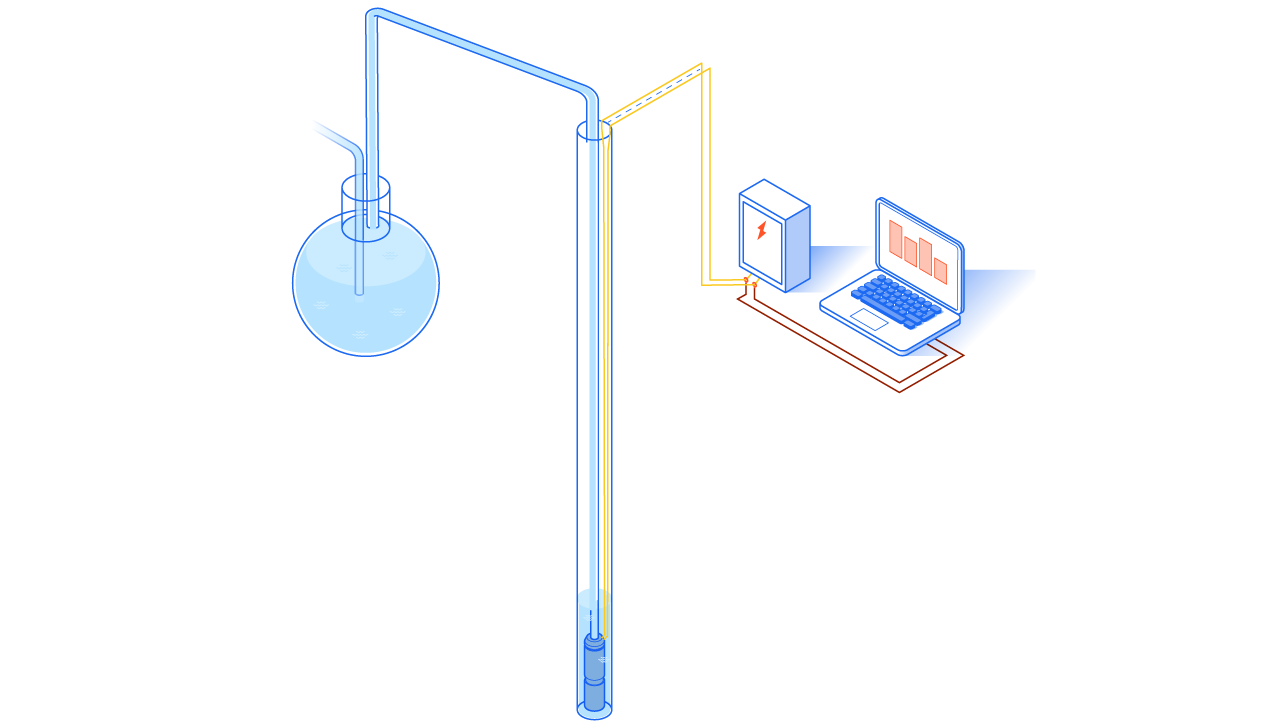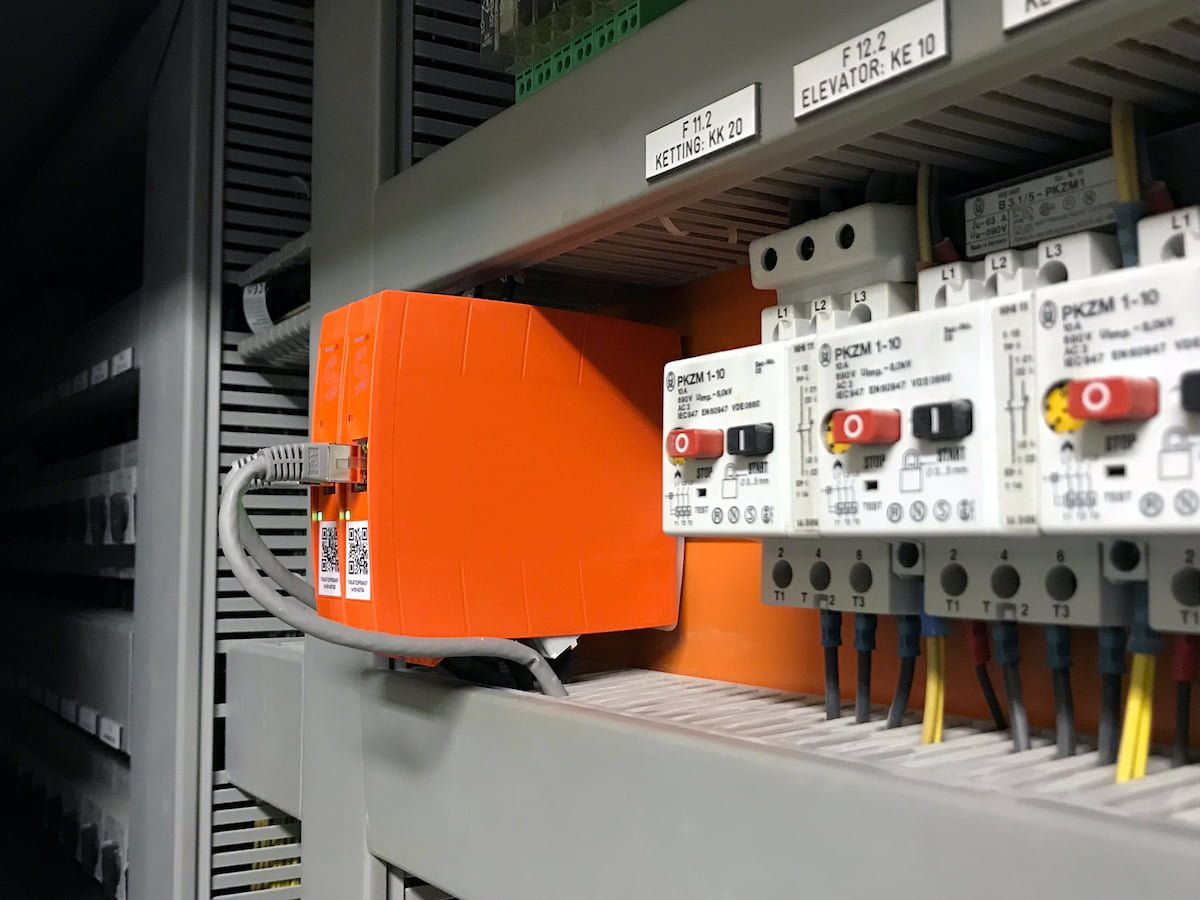Pumps play a crucial role in industries like water utilities and manufacturing, keeping operations running smoothly and efficiently. But when a pump fails unexpectedly, it can halt entire processes—costing valuable time and money. A remote pump monitoring system helps prevent failures by delivering real-time insights that predict issues, reduce downtime, and improve efficiency.

To find the right remote monitoring system for your pump, focus on key factors such as real-time data capabilities, ease of integration with existing infrastructure, and maintenance requirements. The best solutions offer predictive maintenance features, compatibility with various pump types, and minimal sensor installation to reduce complexity and costs.
With multiple monitoring solutions available, selecting the right one can feel overwhelming. This article simplifies the process, outlining key factors, leading technologies, and why advanced solutions like Samotics’ SAM4 provide a data-driven approach to predictive pump maintenance.
What to look for in a remote pump monitoring system
Selecting the right remote pump monitoring system helps pumps remain reliable, efficient, and cost-effective. With various solutions available, it’s essential to focus on key aspects that determine performance and ease of use. Below are the most important factors to consider when making your choice.
Real-time data for proactive maintenance
A high-quality remote monitoring system does more than track pump performance—it provides actionable insights. Real-time data enables maintenance teams to detect minor issues before they escalate into costly failures.
For example, a well pump monitoring system is particularly beneficial in water supply management, where detecting pressure fluctuations early can prevent water shortages and costly repairs.
Implementing a Supervisory Control and Data Acquisition (SCADA) system is one of the available ways for real-time monitoring and control. SCADA collects data from sensors and equipment, transmitting it to a central control room where operators can visualize and analyze system performance. This setup allows for immediate issue detection and resolution, reducing downtime and maintenance costs.
Seamless integration with existing infrastructure
Integrating new monitoring systems with existing infrastructure requires strategic planning. By assessing current systems, identifying compatible interfaces, and rolling out changes in phases, organizations can ensure a smooth and efficient transition.
Not all monitoring systems are built the same. Whether managing centrifugal, submersible, or positive displacement pumps, businesses need a solution that integrates effortlessly with their setup. A system that requires minimal retrofitting or operational disruption offers the best return on investment.
Simple installation and minimal maintenance
Detecting failures is important—preventing them is even better. Electrical Signature Analysis (ESA) offers a non-intrusive approach to condition monitoring by analyzing motor current signals, eliminating the need for physical sensors. This is particularly valuable for submerged, well, or hard-to-reach pumps, where installing and maintaining traditional sensors is both costly and impractical.
By continuously tracking performance, ESA enables maintenance teams to catch developing issues early, reducing downtime and extending asset lifespan. With no extra sensors required, this approach simplifies installation, lowers maintenance demands, and improves long-term reliability—all while cutting costs.
Understanding the differences between remote pump monitoring systems
Various technologies offer different approaches to tracking pump performance, detecting failures, and optimizing operations. Below is a breakdown of the most widely used monitoring methods, their benefits, and where they work best.
Vibration-based monitoring
One of the most established methods, vibration analysis has long been used to identify mechanical issues in pumps. It detects faults such as bearing wear, misalignment, and cavitation by measuring vibrations within the pump system. While effective, this method relies on physical sensors attached to the pump, making it less suitable for submerged or hard-to-reach pumps. Additionally, vibration monitoring may require regular sensor maintenance and recalibration, increasing operational complexity.
Vibration analysis has long been used to detect mechanical issues like misalignment and bearing wear. However, it relies on physical sensors, making it less practical for remote or submerged pumps.
Electrical Signature Analysis – why it’s the best choice for submerged pumps
Electrical Signature Analysis (ESA) takes a different approach by analyzing motor current signals rather than relying on sensors on the asset in the field. This makes ESA particularly effective for submerged or inaccessible pumps, where traditional monitoring methods struggle. ESA provides early detection of electrical and mechanical faults, offering a more comprehensive view of pump health. Since it does not require sensor installation on the asset itself, it reduces maintenance costs while improving reliability and performance in harsh environments.
Electrical Signature Analysis (ESA) analyzes motor current signals to detect failures early. Since it does not require sensor, ESA provides a low-maintenance, highly effective solution for pumps in hard-to-reach locations.

Smarter monitoring with IoT-enabled technology
IoT-enabled monitoring systems enhance pump performance tracking with intelligent, real-time data insights. By connecting pumps to a cloud-based network, these systems collect real-time data across multiple locations, offering centralized visibility and control. Advanced analytics powered by artificial intelligence help identify performance trends, detect anomalies, and predict failures before they happen. IoT-based solutions are ideal for large-scale operations where remote access and predictive maintenance capabilities are essential for efficiency.
IoT-based monitoring solutions deliver real-time monitoring. These cloud-connected systems collect performance data from multiple locations, therefore offering centralized visibility and control. This is especially useful for businesses managing large-scale pump networks.

Three benefits of remote pump monitoring
1. Improved maintenance planning
Pump failures don’t announce themselves—they strike without warning, disrupting operations and leading to expensive emergency repairs. With real-time monitoring, businesses gain the ability to track pump performance continuously, allowing them to act before issues escalate. Sensors and analytics detect early warning signs—like pressure fluctuations, overheating, or unusual vibrations—so maintenance teams can schedule interventions proactively.
This approach shifts maintenance from reactive to strategic. Instead of responding to failures, businesses can plan maintenance when it’s actually needed, improving efficiency while minimizing costly disruptions.
2. Fewer maintenance inspections, more targeted interventions
Traditional maintenance approaches rely on fixed schedules, often resulting in unnecessary inspections—or worse, missing developing faults. Remote monitoring eliminates this inefficiency by providing continuous, real-time insights into pump health. Instead of performing routine checks, teams receive timely alerts when maintenance is actually required.
This means fewer unnecessary inspections, reduced maintenance costs, and more time for teams to focus on high-impact work. By catching issues early, businesses can extend equipment lifespan and avoid costly last-minute repairs.
3. Driving energy efficiency to save costs
Pumps account for a significant share of industrial energy use, and inefficiencies can quietly drain resources. Remote monitoring systems analyze energy patterns in real time, identifying excessive consumption and performance losses. With these insights, businesses can fine-tune pump operations, lowering energy costs while reducing their environmental footprint.
Investing in remote monitoring isn’t just about maintenance—it’s about smarter, more sustainable operations. By reducing downtime, cutting unnecessary inspections, and improving energy efficiency, businesses can achieve greater reliability while driving down costs.
Steps to selecting the best remote pump monitoring system
Assess operational needs and challenges
Before selecting a remote pump monitoring system, it is valuable to take a step back and evaluate the unique demands of your operations. Different industries rely on different pump types, ranging from submersible and centrifugal pumps to positive displacement models, each with its own vulnerabilities and failure patterns. Environmental factors, such as temperature fluctuations, humidity, and exposure to corrosive materials, can also play a role in how a pump system performs over time.
By understanding these operational nuances, businesses can better determine the type of monitoring technology that will deliver the most value—whether it’s vibration analysis, electrical signature analysis (ESA), or an IoT-based solution. Every operation is different. Identify pump types, common failure points, and environmental conditions to determine the most suitable monitoring solution.
Compare system providers and features
With multiple monitoring solutions available, choosing the right provider is not just about comparing features but also about assessing long-term reliability and integration capabilities. Some solutions excel at real-time diagnostics, while others offer deeper predictive analytics powered by AI and machine learning.
Consider factors such as data accuracy, ease of integration with existing SCADA or telemetry systems, and the level of automation available. A provider that offers cloud-based remote access, detailed reporting, and predictive maintenance alerts can significantly reduce operational risks and maintenance costs in the long run.
Additionally, reviewing case studies and industry track records can offer valuable insights into how well a system has performed in real-world scenarios. Not all monitoring systems offer the same level of accuracy, integration, and reliability. Evaluate solutions based on long-term performance and return on investment.
Plan for scalability and ongoing support
Though a remote pump monitoring system is not a short-term investment—it should still evolve with your operations. As facilities expand, so do the complexities of managing multiple pump assets across various locations.
The ideal system should provide the flexibility to scale, whether through additional sensor integrations, enhanced cloud-based analytics, or compatibility with future IoT advancements. Just as important is ensuring continuous support from the provider.
Look for a solution backed by strong technical support, software updates, and regular system enhancements that keep pace with industry advancements. Investing in a system with long-term scalability ensures you won’t need to overhaul your monitoring infrastructure as your operations grow. A remote pump monitoring system should not only address current needs but also scale with business growth. Choose a provider that offers continuous updates, reliable support, and long-term enhancements.
What sets Samotics’ SAM4 apart in remote pump monitoring?
Samotics’ SAM4 sets a new standard in remote pump monitoring with its comprehensive, AI-driven approach—delivering both asset health insights and energy efficiency. Here’s a closer look at what makes SAM4 a top choice:
Advanced Electrical Signature Analysis (ESA) technology
SAM4 uses Electrical Signature Analysis (ESA) to monitor AC motors and connected equipment. By measuring electrical signals from within the motor control cabinet, SAM4 can detect a wide range of mechanical and electrical faults without the need for physical sensors on the equipment. This non-intrusive method is particularly advantageous for assets in challenging environments, such as submerged or hard-to-reach pumps. The system’s AI-driven analysis enables early fault detection, identifying over 90% of potential failures weeks to months in advance, thereby allowing for proactive maintenance and reducing unplanned downtime.
Real-time monitoring and predictive maintenance
Equipped with high-frequency sensors, SAM4 continuously captures current and voltage data, providing real-time insights into asset performance. The system’s self-learning AI processes this data to detect anomalies and predict potential issues before they escalate. Users receive immediate alerts through an intuitive dashboard, enabling maintenance teams to prioritize interventions effectively. This proactive approach not only prevents unexpected failures but also extends the lifespan of equipment by ensuring timely maintenance actions.
Energy efficiency and sustainability
Beyond fault detection, SAM4 offers actionable insights into energy consumption and efficiency. By analyzing operational data, the system identifies areas where energy is wasted and provides concrete recommendations to optimize performance. Industries have reported energy savings of 10-15% and significant reductions in CO2 emissions after implementing SAM4. This dual focus on operational reliability and sustainability makes SAM4 an invaluable tool for companies aiming to enhance efficiency while minimizing their environmental footprint.
Proven success across industries
SAM4 has a track record of delivering tangible benefits across various sectors, including water utilities and heavy industries. For instance, in collaboration with water and wastewater companies, SAM4 has been instrumental in providing 24/7 remote insights into asset health and energy consumption, leading to improved operational resilience and efficiency. These partnerships underscore SAM4’s versatility and effectiveness in diverse industrial applications.
In summary, Samotics’ SAM4 distinguishes itself through its advanced ESA technology, real-time monitoring capabilities, emphasis on energy efficiency, user-friendly design, and proven industry success. By choosing SAM4, businesses invest in a solution that safeguards their operations and promotes sustainability and long-term cost savings.
Conclusion
Implementing a remote pump monitoring system is a necessity for businesses looking to reduce costs, prevent unexpected failures, and maximize efficiency. With the right monitoring technology, companies can shift from reactive to proactive maintenance, thus ensuring pumps operate at peak performance.
From real-time diagnostics to predictive analytics, solutions like Samotics’ SAM4 provide detailed insight into pump health, helping industries prevent downtime, optimize energy use, and extend asset lifespans. As industries evolve, investing in a scalable and intelligent monitoring system will be key to maintaining competitive advantage.
Ready to take control of your pump performance? Get in touch with our team today for a demo and see how SAM4 can help you streamline remote pump monitoring.












